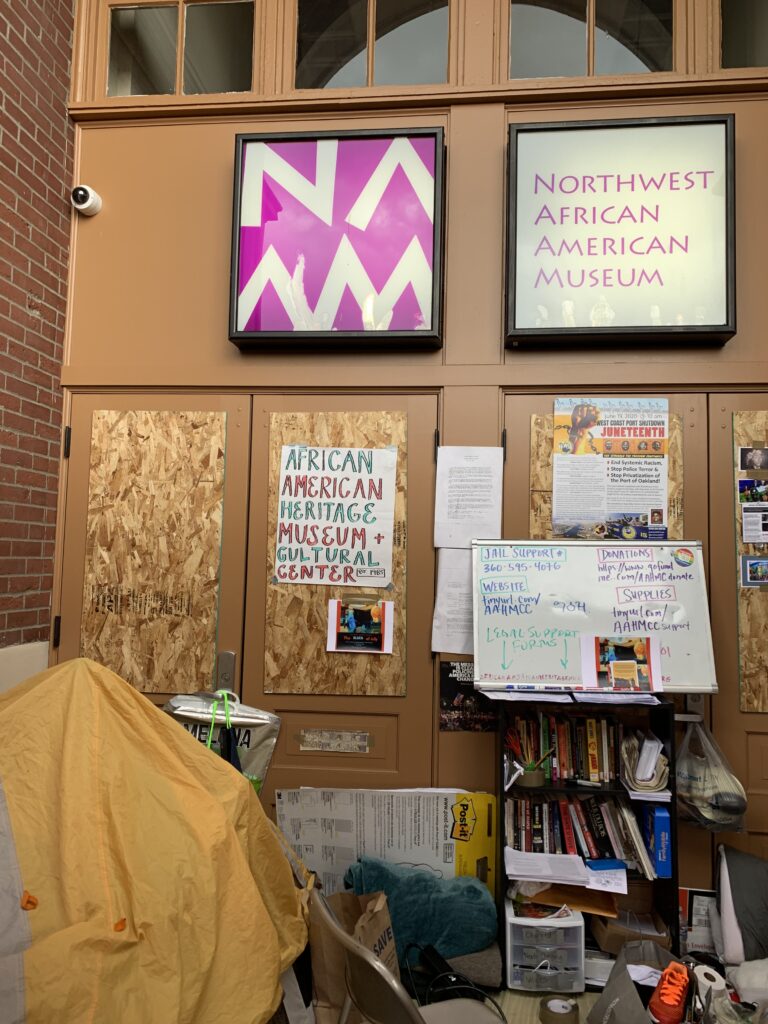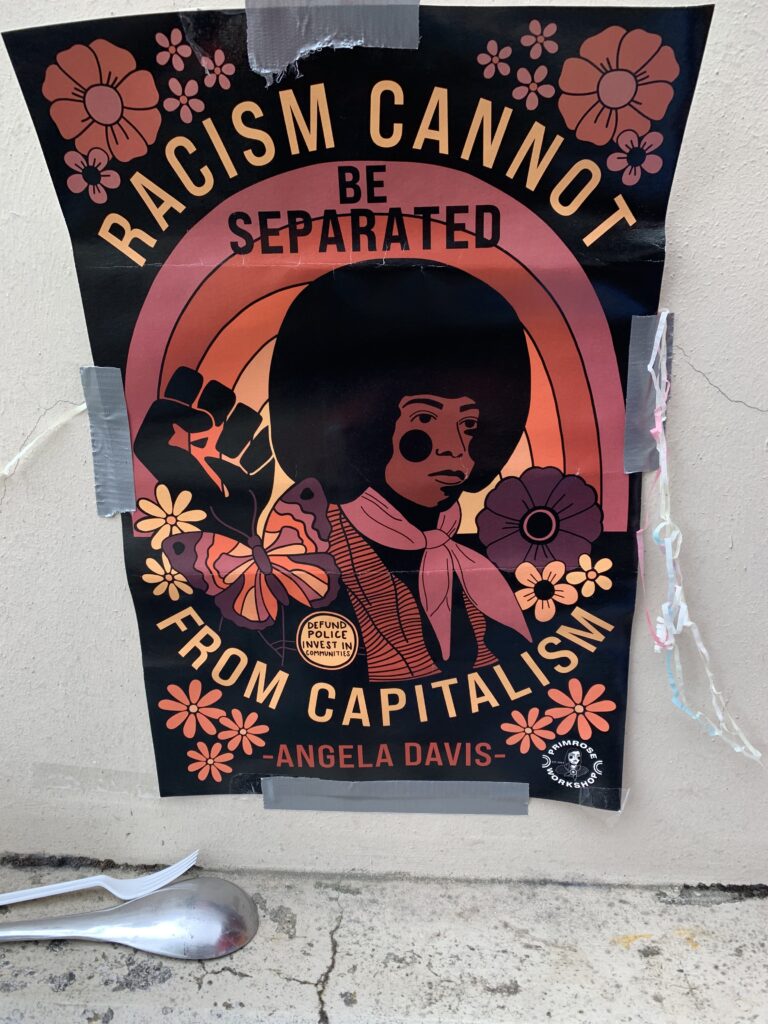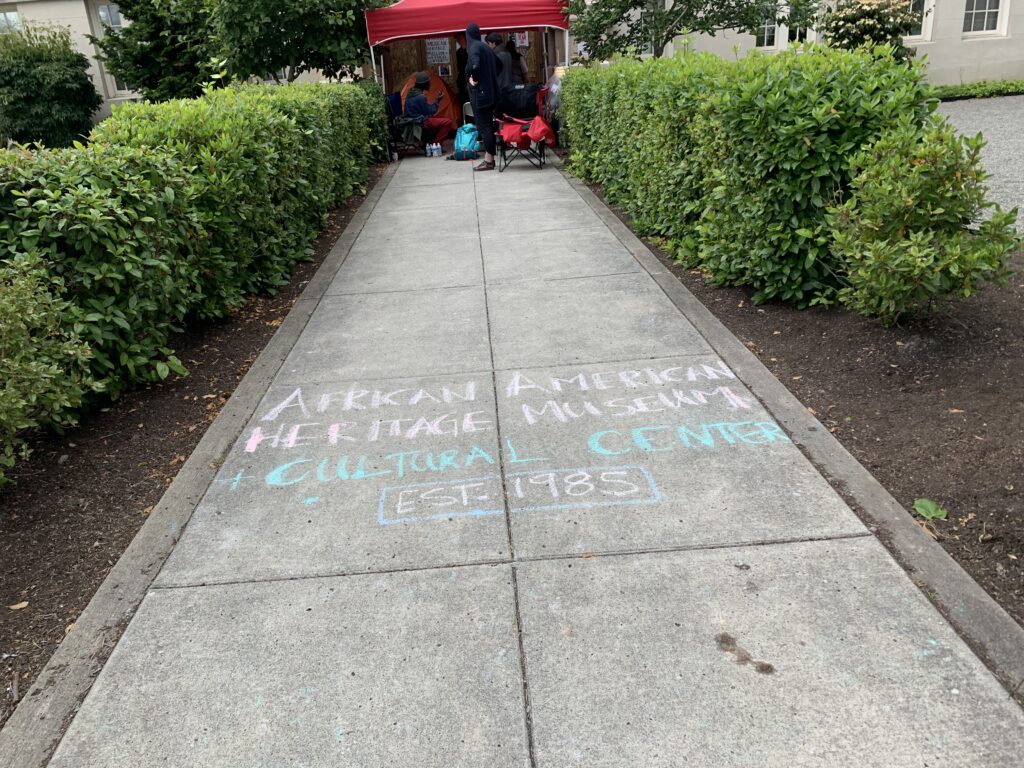Occupying the Northwest African American Museum

The Colman School, site of the Northwest African American Museum, has been occupied since Juneteenth by Omari Tahir, Earl Debnam, and others to declare that they are the rightful owners of the property based on a purchase agreement and loan agreement from January 1998, a copy of which they provided to me. Tahir and Debnam were involved in the original occupation in the 1980s and 1990s.
They state that they are the “real museum” with the name of African American Heritage Museum and Cultural Center. They have a report from the Mayor in 1994, that was Norm Rice, outlining the programs for the museum that included a visual arts center, musical center, artist in residence program, intimate performing/workshop space, practice space, instrument library, and a recording studio.
They state that the current museum does not fulfill these intentions and it is not “supporting the community.” They occupied the school for amazing 13 years between 1985 and 1998 during which they created an exhibition of displays of African artifacts that Omari brought from Africa, they “led workshops, held concerts, engaged with youth to be proud of their heritage so they would not turn to the streets.” That was a huge motivation for both their original occupation and their current occupation: as shootings of black youth continue to escalate, their desire to connect to youth through African heritage is remotivating them to continue their campaign.
So what happened to their plan? You may recall that Omari’s son, Wyking, then identified as Kwame, staged an intervention at the opening of the museum to call attention to this project. Apparently the original board had members who opposed the African American and Heritage Museum and Cultural Center as conceived by the occupiers. The group were evicted and all the displays were taken away and never reappeared. Then the building was sold to the Urban League, in spite of the purchase agreement that had been signed.
After many more years, the current Northwest African American Museum opened. I asked the occupiers what the NWAAM response to the occupation had been. The chair of the board called the police to evict them three times, but the program director has, according to their account, been more amenable to listening.

Clearly some new programming is not enough to satisfy the occupiers, but it seems to me to be a starting point as a resolution. Personally, I find that the NWAAM is a positive presence in our community. Their focus has not been music, which is clearly an aspect of the lack of connection to the community in the opinion of the occupiers, ( 5 of 7 parts of their original program concern music). As far as other parts, like a Visual Arts Center, their complaint is the absence of a connection to Africa. But of course we do have the fantastic Seattle Art Museum collection and curator. An artist in residence program is a great idea if they get the funding. The James W. Washington House had an an artist in residence program that was incredibly successful while the funding and direction lasted.
So I am going to simply report on this important event. It needs to be covered, there has been no press on it at all. Underlying the issues here is class conflict, between elites and ordinary people as well as between middle class liberals and radical left politics ( Omari participated in the occupation of Centro de la Raza and Discovery Park with Bernie Whitebear and the Gang of Four). Also there is the legal issue based on the purchase from 1998, that was prevented from being completed.
Museums all over the country are hopefully examining their elitism right now. Black Lives Matter certainly has opened up awareness that ALL museums suffer from elitism, whitism, and lack of connection to ideas for connecting to community in a way that can address mitigating violence, gangs, and drugs in the streets. If Police departments were defunded to provide more money for community, this is one direction it could go.
My good friend Georgia McDade sent me an article outlining how black creatives perform for white audiences, white cultural power structures. That is definitely something to think about here. Is NWAAM partipating in that? I don’t think so. In fact the white power structure of Seattle’s cultural community has not embraced the museum and its programs as anyone can see if you attend a program there. The same is true of the Wing Luke Museum in the International District. Segregation is alive and well in Seattle culture, even as the Central District fights for its identity as a center of black culture in the midst of rapid gentrification. Africatown is resisting this process. So are these occupiers, ironically, as they protest the “gentrified” NWAAM departing from their vision.

This entry was posted on July 7, 2020 and is filed under Uncategorized.








